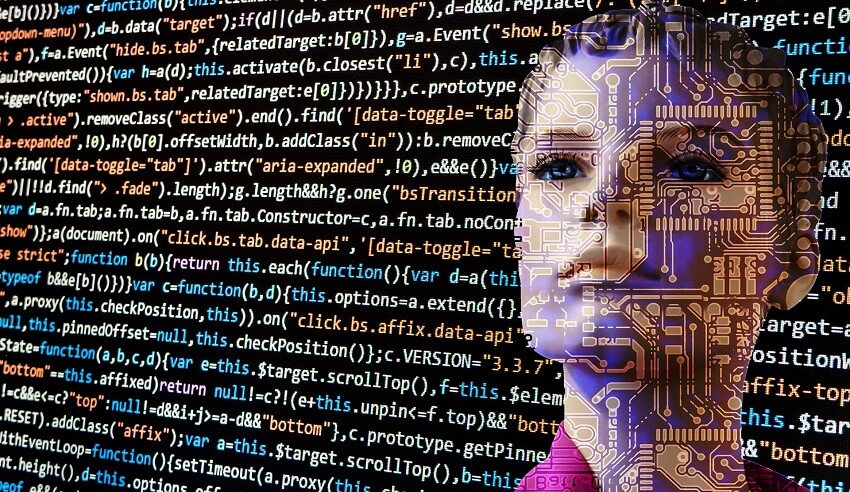The law is miles ahead of other professional services when it comes to adopting smart technologies and using big data, according to a leading consultant.

David Smith is the founding director of Smithink, a consultancy that advises businesses ranging from accounting practices to law firms on how they can improve their efficiency and implement change.
“In my view, the two professions that are probably leading this charge are healthcare and the law,” he said.
“One of the reasons why the law is tending to be a bit more advanced than some of the other professions … is that so much data in the legal profession is actually public, all the case law and everything is all public, so technologists can digitise that data and start to use it for other purposes.”
Mr Smith identified legal analytics firm Premonition as an example of a technological disruptor, particularly due to its use of big data to rate the performance of barristers and law firms in the UK High Court.
“What that does, of course, is empower the client to make better decisions about who they’re going to select to do the work,” he said.
“Another example in terms of using big data … is settlement engines. You’ll go into these applications and you’ll say, ‘These are the facts of my dispute’, and they’ll ask things like the jurisdiction and ‘Is it a family law matter?’ or ‘Is it something else?’, and then it will actually help you negotiate.
“Through processing a large number of negotiations, it actually now knows how to model a negotiation, and can help you predict what’s the next offer you should make to optimise the outcome to yourself. And it’s just doing that by storing in its database experience from thousands of other negotiations that it’s done.
“That’s a very good example of machine learning.”
Mr Smith said there have even been suggestions that technologies such as IBM’s Watson could serve as judges in simple cases.
“Some people reckon we’re 10 years away from a Watson judge,” he said.
“In some parts of the law that’s now being heavily used. They’ve encoded into it a lot of case law and a lot of the research material of the law, and what Watson is very good at doing is you can ask it basic questions and it will search through its database and tell you what it thinks the right answers are.”
However, he said, artificial intelligence is a long way away from being able to replicate a human being’s thought processes.
“One of the concepts people need to get their heads around is ‘Can machines actually apply judgment?’, and when you look at what these machines actually do, none of them really apply judgment,” he said.
“What they actually do is number-crunch and apply what I call brute force. Unlike the human brain, they can analyse every possibility of a circumstance and then say ‘Out of all of those possibilities, this one looks as though it’s going to give you the most probability of success’, whereas us humans do that by pure judgment.
“That’s where machine learning comes in, because the more the machine watches what the human beings are doing, and keeps on memorising that and codifying it, in the end it can mimic what the human being does.
“That’s why the argument around a Watson judge makes sense, because a lot of cases are pretty simple and are pretty basic, and perhaps [it could] determine those. One of the benefits of that, of course, is that it starts to make law affordable again to the masses.”
Mr Smith said the key to the legal profession’s adoption of technology is the nature of the information that lawyers work with, both in terms of privacy and structure.
“In the accounting industry … most small business financial statements aren’t public, and the next problem created by that is that if [you have two different clients], the ledger for each of those businesses is not set up the same way, and so I can’t create a view across all of those ledgers to give me any big data analysis that’s meaningful,” he said.
“Whereas because all of these cases in the law are public, the IT people can take all of that information and codify it in a structured way so you can actually analyse it, and I think that’s the core difference between the two.”
Mr Smith said the issue is not one profession being more resistant to change than another. However, he identified scale as a key determinant of a firm’s ability to adopt new technologies.
“Today it’s a scale game, so to adopt these technologies you need to be a business with a bit of resources behind you,” he said.
“Sure, there are suppliers out there developing software, but you need to have the resources to implement it, to change your processes, to adopt all this stuff. When you look at the law, there’s quite a number of large law firms who have got those resources and can do it.
“The challenge will be, and this is for all the professions, that we are creating a have and have-not type world, where the bigger firms can afford to invest in all of this and the smaller firms find it more difficult, and I think that’s going to be an interesting challenge.”